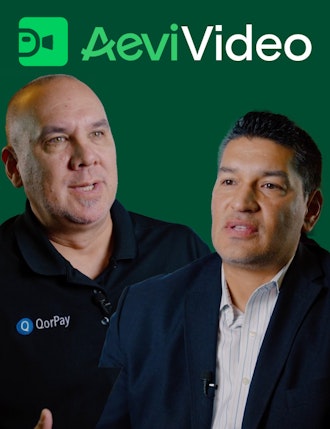IXOPAY x Aevi: Why the future of in-person payments is flexible, open and connected
At Money20/20 Europe, our CRO Victor Padee joined Payments with our partner, IXOPAY, to share how Aevi is helping businesses bring the speed and flexibility of digital payments into the physical world. In this episode, Victor dives into the challenges merchants face around fragmentation, clunky legacy setups, and rising customer expectations, and explains how Aevi’s open, device-agnostic platform is designed to simplify in-person payments, support collaboration across the ecosystem, and scale with market demand.
Transcript Highlights
How would you describe Aevi’s mission and its role in today’s payment ecosystem?
At Aevi, our mission is to simplify in-person payments and bring them in line with the way the digital world has progressed. If you look at physical payments today, whether in retail, hospitality, fuel stations or local cafés, there is still a lot of legacy technology. It is often rigid, siloed and inflexible compared to online payments. Customers now expect fast and seamless checkouts with multiple payment options. In-person payments are still clunky and outdated.
That is where we come in. We bring the simplicity and flexibility of e-commerce into the physical world. Our cloud-based solution makes in-person payments more dynamic, more connected and far easier for businesses and merchants to manage.
What are the biggest pain points merchants face with in-person payments, and how does Aevi help solve them?
The biggest pain point is fragmentation. Merchants often have to manage separate systems for hardware, software, acquirers, loyalty programs and more. These systems rarely talk to each other. This leads to high costs, inefficient setups and a lack of visibility into what is happening at the point of sale. Another issue is keeping up with customer expectations. People want to pay with cards, phones, watches and Buy Now Pay Later options. If your setup is not flexible, you lose customers.
Scalability is also a major challenge. The pace of change in in-person payments is faster than I have seen in the past decade. Expanding into new regions, launching new features and adding payment methods is slow with legacy infrastructure. Aevi solves this by pulling all of these disconnected elements into one cloud-based orchestration layer. Businesses can manage devices, payment types and data across all locations in one place.
How important is being device agnostic and open when it comes to scalability and future-proofing?
Being device agnostic and open means businesses are not locked into one provider or limited to specific hardware. In traditional setups, one terminal is tied to one acquirer. We break away from that. Our clients can integrate new payment methods faster, scale more easily and avoid having to replace all their hardware. This translates to lower costs and more agility. They are not stuck in long contracts or dependent on one vendor.
How do your partnerships with acquirers, ISVs and terminal providers strengthen Aevi’s ecosystem?
Collaboration is at the core of what we do. There is still some misunderstanding about payment orchestration. People sometimes think we are here to replace acquirers, ISVs or terminal providers. We are not. We are here to connect them. By working closely with each player in the ecosystem, we create a more connected and flexible solution that improves the payment experience. Acquirers can enhance their merchant offering. ISVs can build and launch apps on our platform. Terminal providers can enter new markets without complex integrations.
We have built strong partnerships with leading names in the industry. The result is a solution with real, measurable impact. Our platform is built to support a network of partners. Each one brings unique strengths. There is no single provider that can do it all. A strong ecosystem is always greater than the sum of its parts.
How does Aevi stay ahead of market changes and evolving payment technologies?
We stay ahead by staying open and adaptable. We are not trying to control the entire payment process. We focus on working with the best partners and bringing strong solutions to market together.
Our platform is built to evolve. It is designed to grow with market demand and future changes, not just serve short-term needs. We can quickly integrate new technologies, payment methods or partners depending on use case, country or region. We also work closely with our partners and customers on real-world scenarios, so we are building what is actually needed.
What trends are shaping the future of in-person payments, and how is Aevi preparing for them?
There are four key trends we are seeing.
- Businesses are demanding more flexibility and true omnichannel experiences.
- Data is playing a bigger role. Merchants want to use data for things like loyalty, checkout optimisation and customer recognition across channels.
- We are seeing a shift toward software-defined terminals and softPOS. Hardware is no longer the end product. It is simply a vehicle.
- Alternative payment methods are growing. When I started in this industry, it was all about Visa, Mastercard and Discover. They are still important, but in many regions, alternative methods are now more widely used than traditional schemes.
The key is to keep following the needs of customers and partners. I cannot predict what is coming in 12 months, but I am sure there will be innovations we have not even imagined yet.
Our platform is ready for that. It is designed to scale quickly, integrate fast and adapt to change. It is a very exciting time for in-person payments.
For media enquiries contact:
Interested in reading more around this subject? Here are some useful articles…












